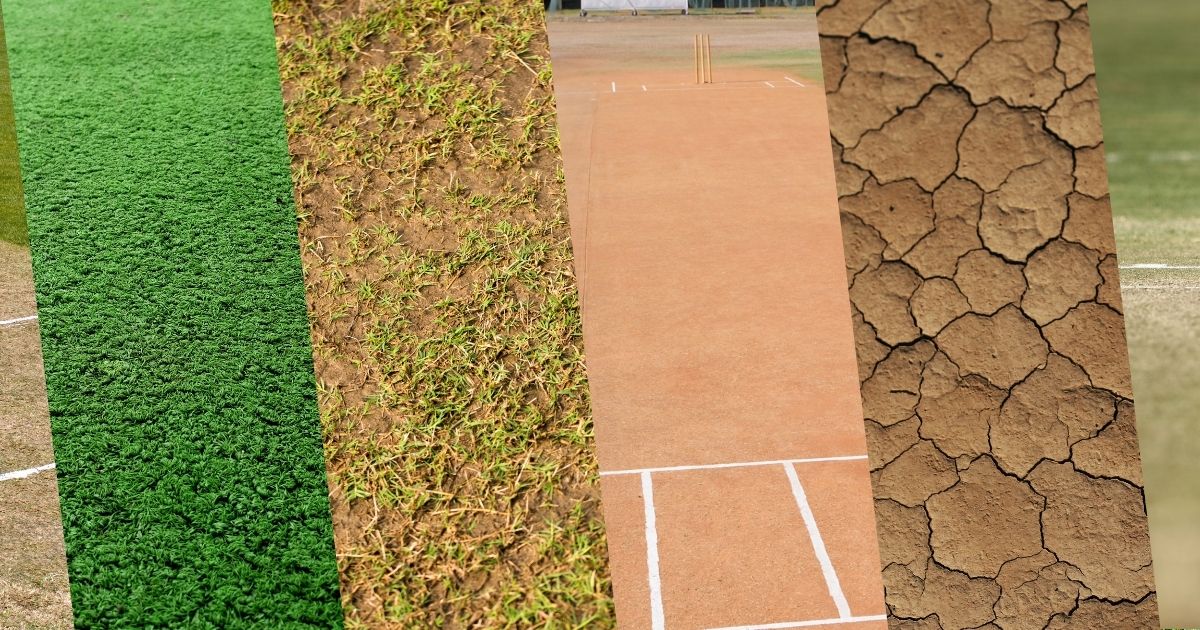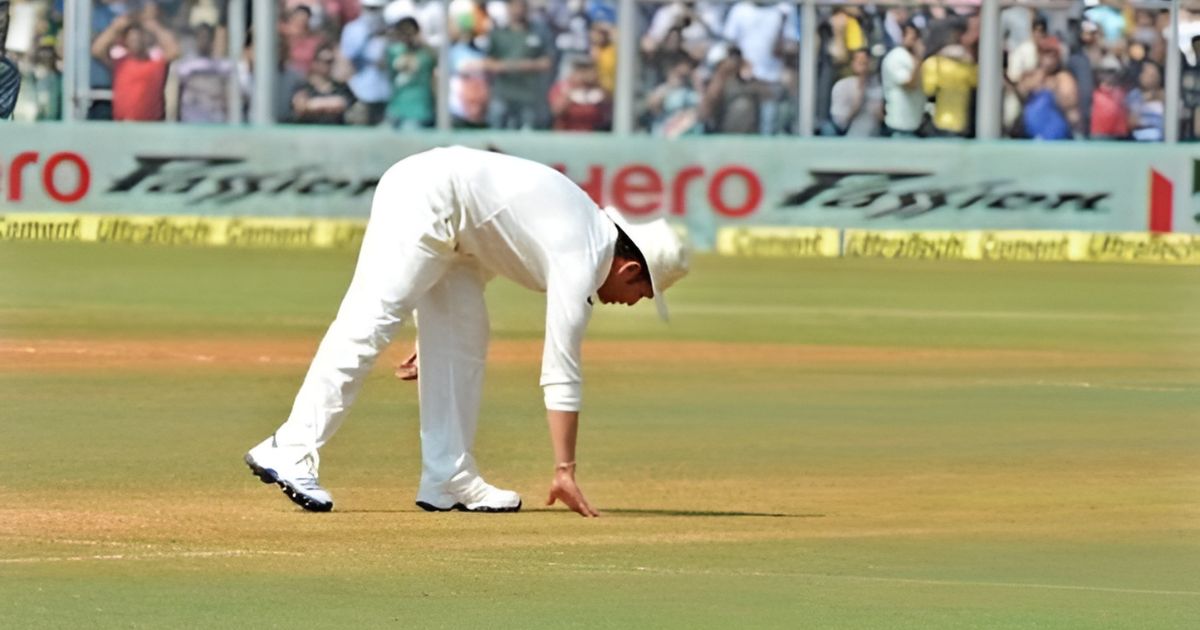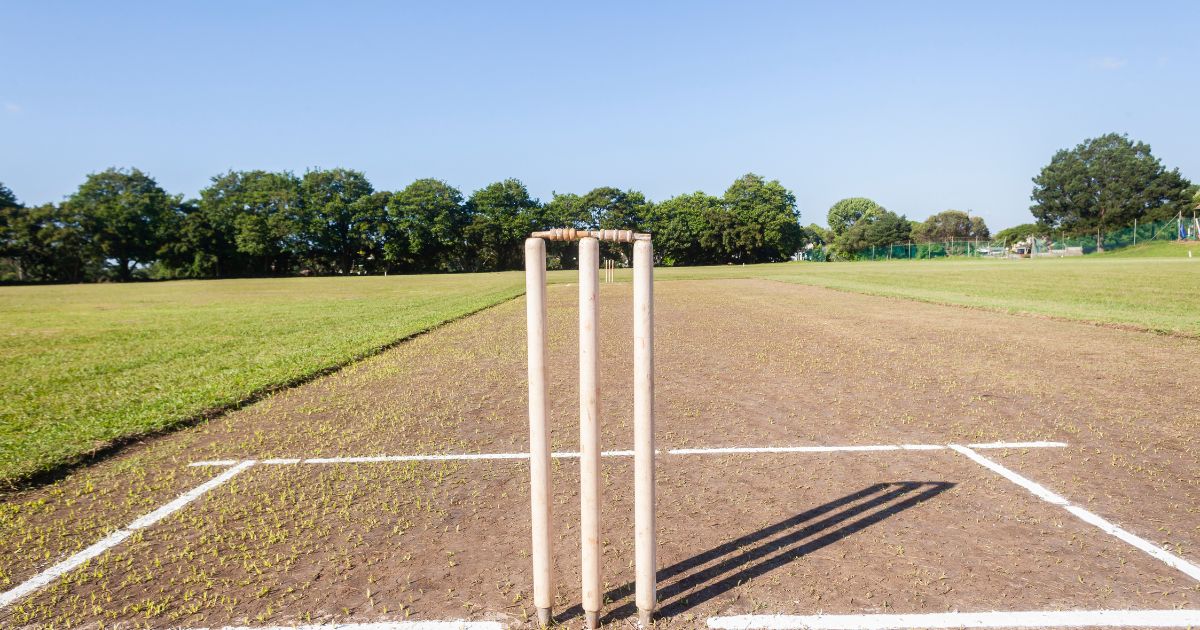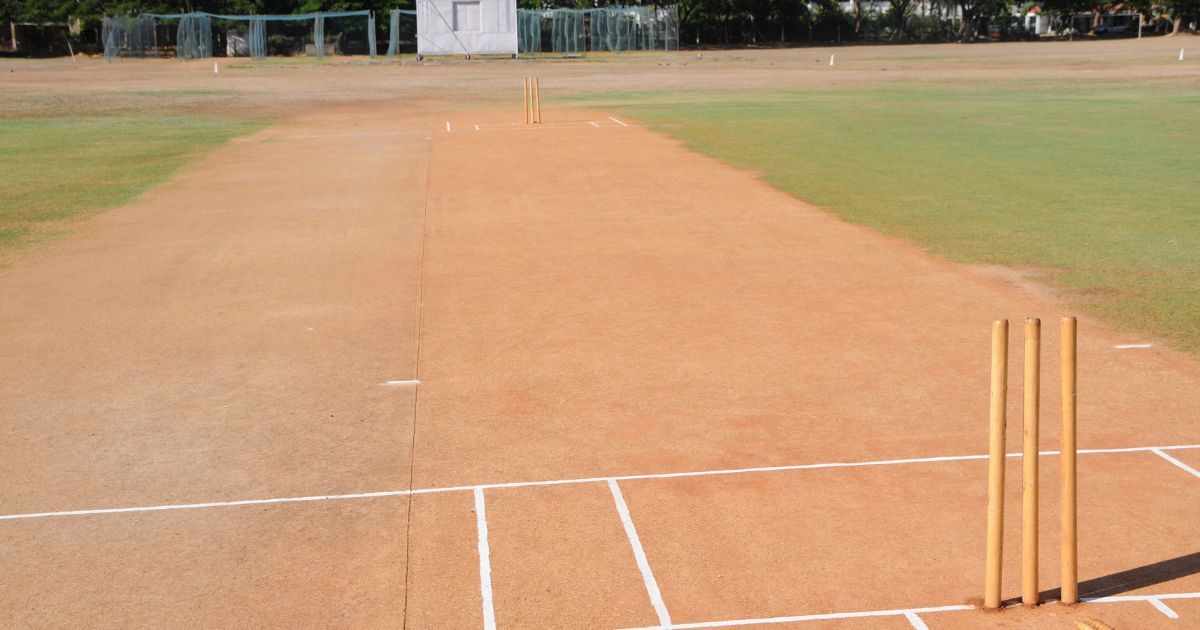The heart of a cricket match isn’t just the willow meeting the leather; it’s the very surface where this drama unfolds. The cricket pitch, a rectangular strip of meticulously prepared ground, is a dynamic entity that breathes life into the game.
Understanding its intricacies separates passionate fans from the merely curious, and for those seeking to truly grasp the essence of cricket, this guide delves into the fascinating world of cricket pitches.
Understanding the Cricket Pitch: Dimensions & Markings

Imagine a rectangular strip of land, a center stage for cricketing artistry. That’s essentially a cricket pitch. Its length is a constant – a respectable 22 yards (20.12 meters), roughly the distance of a one-chain throw. The width is 10 feet (3.05 meters), providing ample room for batsmen to defend and bowlers to unleash their fury.
Markings etched onto the pitch define the playing area and enforce the rules. The two sets of three stumps with bails perched on top at each end are the wickets.
Creases, white lines drawn on the pitch, mark boundaries for deliveries, runs, and strategic positioning. The popping crease, closest to the wicket, defines the bowling zone. Stepping beyond it results in a no-ball, an illegal delivery. The return crease marks the batsman’s safe haven, while the bowling crease separates the bowler’s run-up from the pitch.
Finally, the boundary, usually a rope fence encircling the field, defines the six-hitting zone. A ball crossing this line in the air is a coveted six, fetching the batsman maximum runs.
Different Types of Cricket Pitches

The world of cricket pitches is as diverse as the countries that play the game. Here’s a glimpse into some of the most common pitch types:
- Green Pitch: A batsman’s nightmare (at least initially), green pitches are covered in a layer of fresh grass, offering swing and seam bowling assistance. Think of pitches in England and New Zealand.
- Dusty Pitch: Common in subcontinent countries like India and Sri Lanka, dusty pitches offer minimal swing and seam movement. Spinners rejoice as the ball grips the dry surface and turns prodigiously.
- Dry Pitch: Similar to dusty pitches, dry pitches offer assistance to spinners. However, they can also crack significantly, creating uneven bounce that can be dangerous for batsmen.
- Flat Pitch: A haven for batsmen, flat pitches offer minimal swing, seam, or spin. Think of pitches in Australia, known for their true bounce and high-scoring matches.
- Matting Pitch: Used primarily in limited-overs cricket, matting pitches feature a synthetic layer on top of the pitch. This evens out the bounce and reduces the wear and tear on the pitch itself, making them ideal for high-frequency matches.
Beyond these common types, several other pitch variations exist, each with its unique characteristics:
- Sporting Pitch: This ideal scenario offers a fair contest between bat and ball throughout the match. The pitch deteriorates gradually, offering swing bowling opportunities early on and assisting spinners later.
- Dead Pitch: A bowler’s nightmare, dead pitches offer minimal assistance for either pace or spin bowling. The ball tends to skid through low and slow, making it a struggle for bowlers to take wickets.
Understanding these different pitch types allows cricket fans to appreciate the strategic nuances of the game. For instance, watching a master batsman adapt their technique to a turning pitch in India or a swing bowler exploit the conditions in England adds another layer of intrigue to the contest.

Indian Cricket Legends and Their Pitch Mastery
Indian cricket boasts a rich history of legendary players who have mastered the art of playing on turning pitches. Here are some prominent examples:
- Spin Wizard Anil Kumble: Widely regarded as one of the greatest spinners of all time, Anil Kumble thrived on Indian pitches with his impeccable control, accuracy, and ability to exploit the turning deliveries. His record-breaking 10 wickets in the Kolkata Test stands as a testament to his mastery on turning tracks.
- The Master Blaster – Sachin Tendulkar: While not necessarily known for his love of turning pitches, Sachin Tendulkar’s sheer brilliance allowed him to adapt to any surface. His exceptional footwork and ability to pick the length of the ball early helped him counter spin and score freely even on challenging surfaces.
- The Turbanator – Harbhajan Singh: Another legendary Indian spinner, Harbhajan Singh, possessed a deadly doosra (a ball that spins the opposite way from the bowler’s natural spin) that wreaked havoc on batsmen on turning pitches. His aggressive bowling style and ability to extract sharp turn made him a nightmare for many batsmen on Indian soil.
The Impact of Pitch Conditions on the Game

The pitch isn’t just a passive platform; it actively influences the dynamics of the match. Here’s how:
- Batsman vs Bowler Dominance: The pitch conditions can tilt the balance of power between batsmen and bowlers. A green pitch with good grass cover and moisture favors bowlers, with seam and spin making life difficult for batsmen. Conversely, a flat, dry pitch offers a batsman’s paradise, with minimal swing and spin, allowing for stroke-filled dominance.
- High-Scoring vs Low-Scoring Pitches: Pitch conditions directly impact the overall score of a match. Batsmen tend to score freely on flat pitches, leading to high-scoring encounters. Conversely, green pitches with significant seam and spin movement often result in low-scoring matches, where bowlers reign supreme. Understanding these dynamics helps fans appreciate the context of a match’s scorecard.
What is a Balanced Pitch?
A “balanced pitch” is a holy grail for curators, the professionals who prepare and maintain cricket pitches. It’s a pitch that offers a fair contest between bat and ball.
There’s enough assistance for bowlers to take wickets without making it unplayable for batsmen, and batsmen have the opportunity to score runs without excessive dominance.
Achieving this balance is an art form, requiring experience and an in-depth understanding of pitch behavior.
Indian Historical Examples
2012 World T20 Final: India vs Sri Lanka: In contrast to the Kolkata Test, the 2012 World T20 final showcased a batsman-friendly pitch in Sri Lanka. The lack of turn and bounce made life difficult for Indian spinners, while Sri Lankan batsmen capitalized on the consistent bounce, putting up a mammoth 134 runs. This score proved too much for the Indian batting line-up, highlighting how a flat pitch can favor the team batting first.
Understanding Pitch Behavior: Factors to Consider

A cricket pitch isn’t a static entity. It’s a living, breathing surface, constantly evolving throughout the match. This “behavior” – how the ball bounces, spins, and seams – significantly impacts the game. But what dictates this behavior? Three main elements significantly influence it:
- Grass Cover: A lush, grassy pitch offers more grip for the ball, aiding seam movement for fast bowlers. The ball deviates slightly in mid-air, making it trickier for the batsman to judge its trajectory. As the match progresses, the grass wears down, reducing seam movement and potentially aiding batting.
- Moisture Content: A moist pitch provides a “sticky” surface, aiding spin bowlers. The ball grips the pitch upon landing, imparting a significant spin, making it deviate off the straight line and potentially deceive the batsman. Conversely, a dry pitch offers less grip, favoring batsmen as the ball skids on, offering fewer surprises.
- Compaction of the Track: How firmly packed the pitch is also plays a role. A tightly rolled pitch offers a more consistent bounce, favoring both batsmen and bowlers who rely on pace and accuracy. A loose pitch, on the other hand, can produce uneven bounce, making stroke-playing a gamble.
By understanding these factors and how they interact, cricketers can develop strategies to adapt their game accordingly. A batsman facing a seaming pitch might employ a more watchful approach, while a spinner will relish a moist surface. This constant interplay between pitch behavior and player tactics is the essence of cricketing strategy.
Final Thought
The cricket pitch, a seemingly simple strip of ground, holds immense significance in the game. Understanding its intricacies – from dimensions and markings to pitch behavior and different types – enhances your appreciation for the strategic nuances of cricket.
Whether you’re a seasoned fan or a curious newcomer, this guide has hopefully equipped you with the knowledge to navigate the fascinating world of cricket pitches. Remember, the pitch is a living, breathing entity, and its character shapes the narrative of every match. So, the next time you watch a cricket match, pay close attention to the pitch – it might just tell you a story of its own.
Confused by the complexities of cricket betting? GCBI can clear things up with their insightful tips and reviews – visit them today!
FAQs
Curators employ various methods to dry a damp pitch, including using covers to trap heat from the sun, spading the surface to allow moisture to evaporate, and using drying mats that absorb moisture.
As mentioned earlier, a cricket pitch is a standardized size of 22 yards (20.12 meters) long and 10 feet (3.05 meters) wide.
A good pitch, according to the ICC regulations, should offer a fair contest between bat and ball. It should provide consistent bounce, deteriorate progressively throughout the match, and not excessively favor one type of bowling or batsmanship.
Cricket grounds often have several pitches to allow for rotation and prevent overuse of a single pitch. This ensures the pitches remain in good condition throughout the season.
Spinners generally favor dry or dusty pitches that offer significant turn and grip for their deliveries.
There’s a misconception that some cricket pitches are larger than others. The standardized dimensions ensure a level playing field regardless of location.
Indian pitches are known for being slower due to several factors, including the climate (hot and dry), soil composition (often red soil with less grass), and pitch preparation techniques employed by curators.
